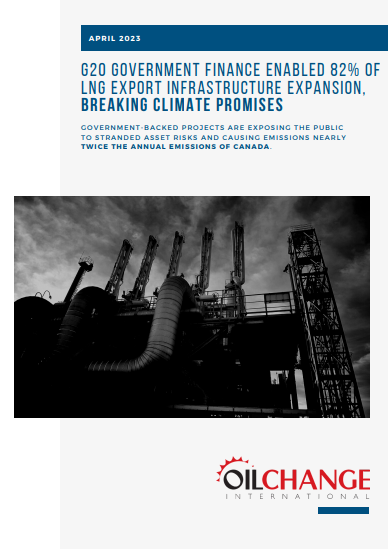
Fossil Finance Violations: Tracking Fossil Fuel Projects that violate commitments to end international public finance for fossil fuels
*Updated March 27, 2025* Updated analysis by Oil Change International shows that six countries, including Germany, Switzerland, Italy, the Netherlands, the United States, and Japan, have broken their promise to end international public finance for fossil fuels by the end of 2022.









